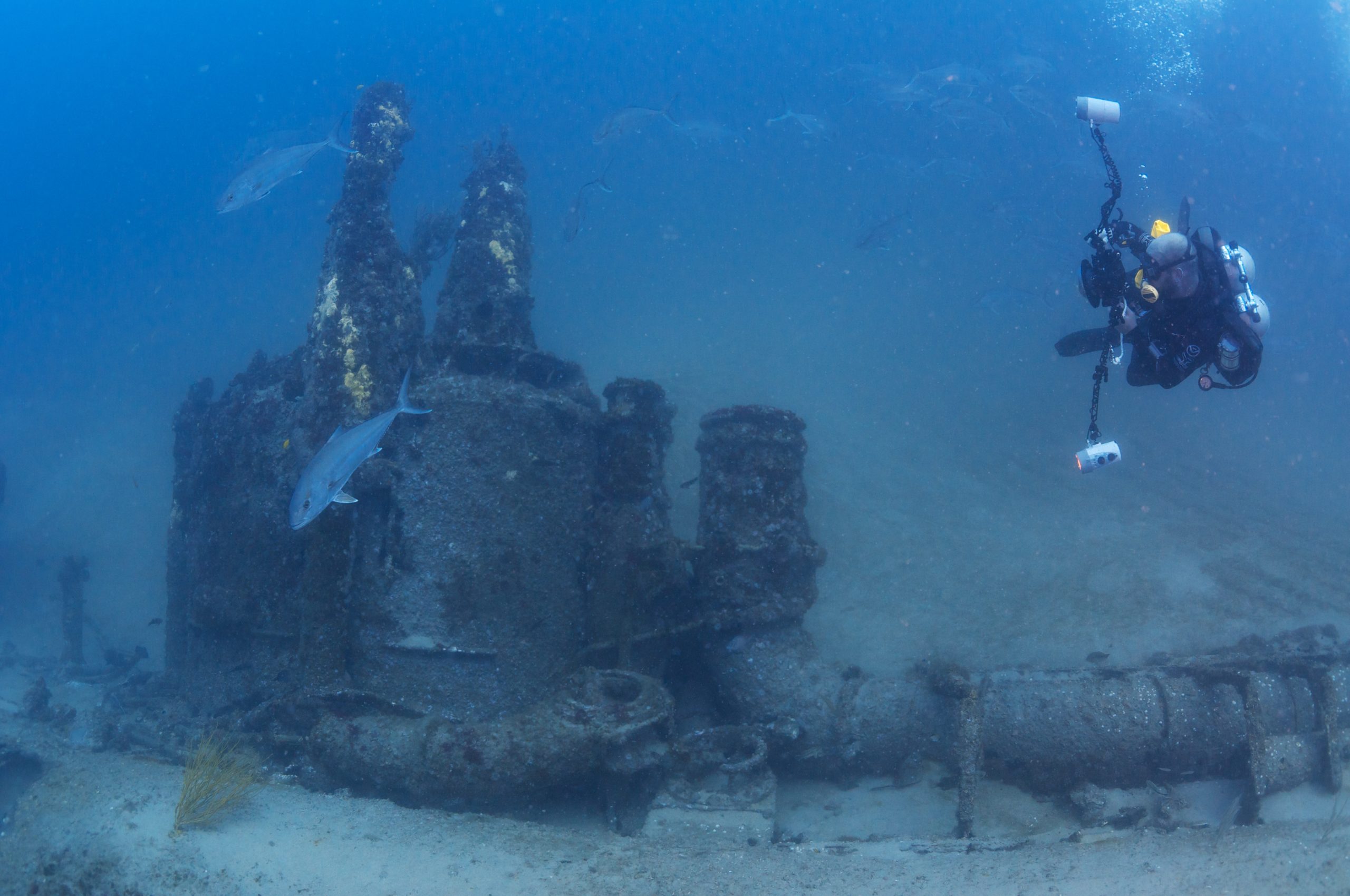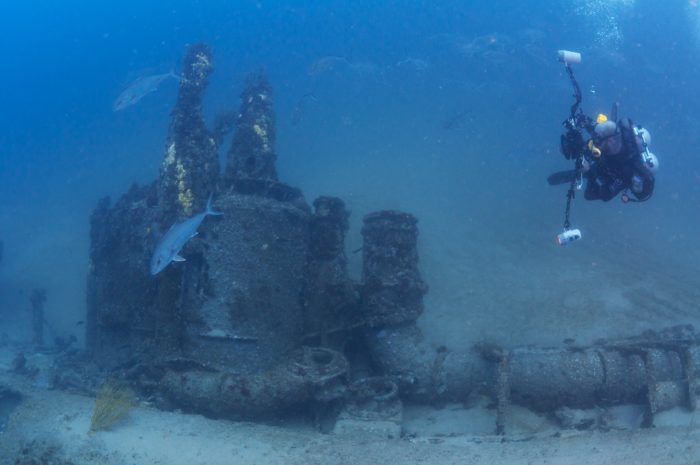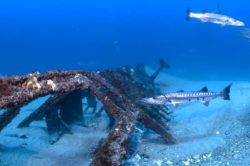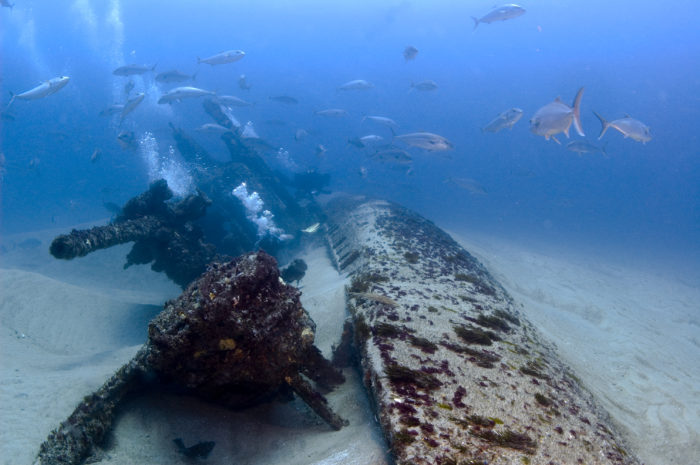
U-701: Sunk in Monitor during WWII

Photo Credit: NOAA
What importance does U-701, a sunken German U-Boat have in American history and culture? It was the first German U-Boat sunk by the United States military off the coast of North Carolina during World War II and lies near Monitor National Marine Sanctuary. The U-701 shipwreck is also listed on the National Register of Historic Places. The site of U-701’s remains marks the grave of the crew members who could not escape the ship and is significant to American history because it was the first U-Boat sunk by the United States Army Air Force during WWII’s Battle of the Atlantic.
U-701 was launched in April of 1941 and commissioned on July 16 of the same year. Captained by Horst Degen, U-701 left from Kiel, Germany on December 27, 1941. This marked the first-ever deployment of U-Boats into American waters and took part in numerous attacks on American, British, and Norwegian ships along the way including sinking a British freighter, Baron Erskine, a fishing trawler, Nyggjaberg, and two armed Britsh antisubmarine trawlers, HMS Notts County and HMS Stella Cappella. Its final and most successful war patrol began on May 20, 1942 and included mining attacks in three ports on the American east coast: the Chesapeake Bay, Delaware Bay, and the Boston Harbor. U-701 was assigned to attack the Chesapeake Bay and on June 12, 1942 it laid all 15 mines with which it was equipped, sinking two ships and badly damaging three others within 30 minutes.

Photo Credit: Steve Sellers/NOAA
Moving on to its next targets near Cape Hatteras, NC, U-701 sank a U.S. Navy boat, the USS YP-389, and the SS William Rockefeller, one of the largest tankers in the world at the time, and damaged British and Norwegian vessels all by June 27, 1942.
Shortly after, on July 17, 1942, U-701 would embark on its final patrol. Around 1:00 p.m., an army plane piloted by Lieutenant Harry Kane out of Cherry Point, North Carolina, dropped three depth charges on U-701, leaving severe damage to the ship. All but seven crew members escaped these initial blows, likely as their boat was sinking. The 36 surviving crew members drifted along with the Gulf Stream for two days, and by the end only seven had survived the treacherous journey. These seven men were captured and became Prisoners of War until the end of World War II in 1945.
The U-701 wreck was left undisturbed for 47 years before it was discovered by a sport diver in 1989. The diver, Uwe Lovas, contacted Horst Degen and kept the location a secret until it was rediscovered in 2004 after a hurricane exposed the site. Its final resting place is near Monitor National Marine Sanctuary and a number of other shipwrecks known as the Graveyard of the Atlantic, where it is accessible to recreational SCUBA divers all year round.

Photo Credit: Steve Sellers/NOAA
To learn more about the history of the U-701 and Monitor National Marine Sanctuary, click here.
